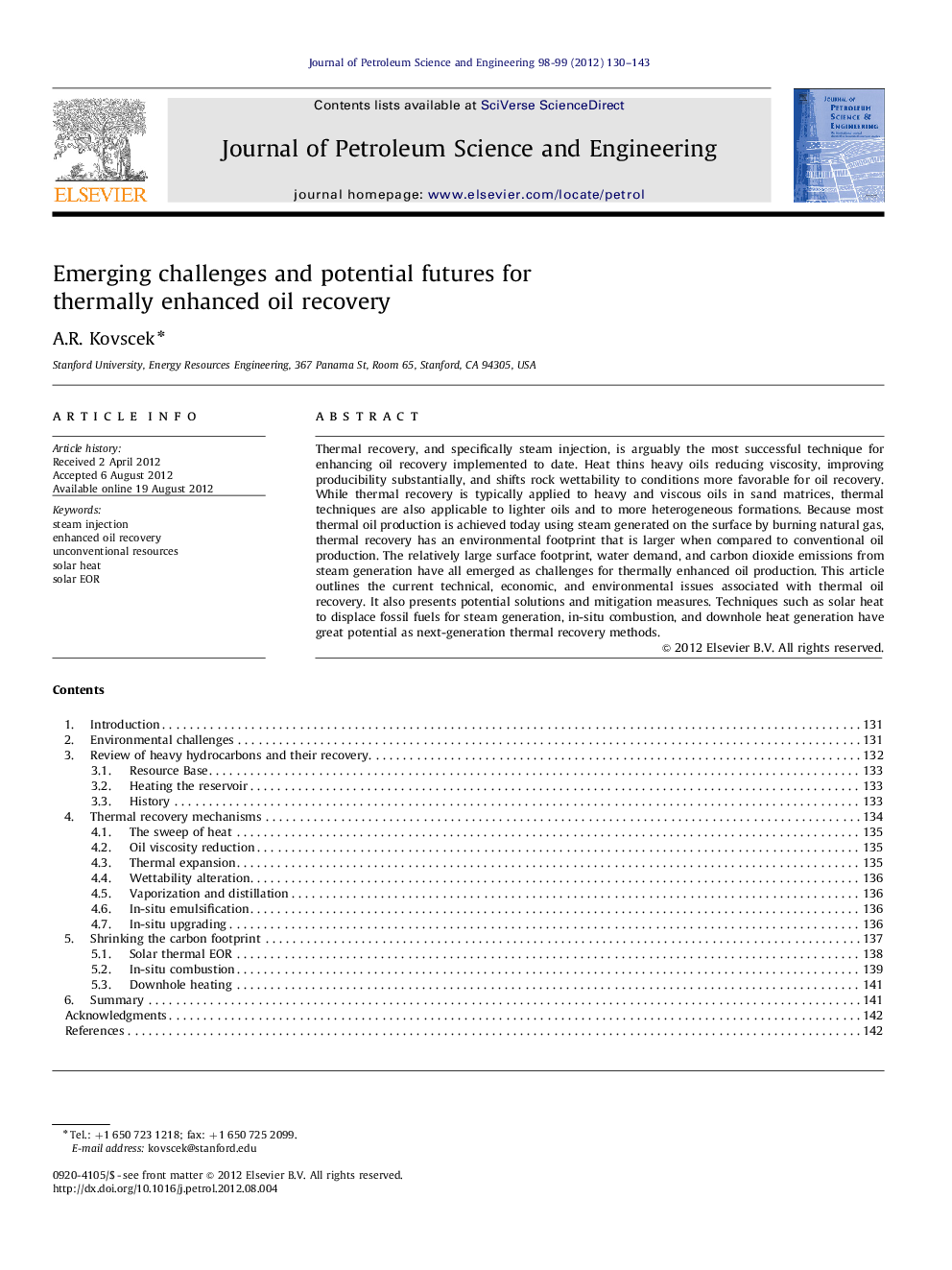| کد مقاله | کد نشریه | سال انتشار | مقاله انگلیسی | نسخه تمام متن |
|---|---|---|---|---|
| 1755398 | 1522842 | 2012 | 14 صفحه PDF | دانلود رایگان |

Thermal recovery, and specifically steam injection, is arguably the most successful technique for enhancing oil recovery implemented to date. Heat thins heavy oils reducing viscosity, improving producibility substantially, and shifts rock wettability to conditions more favorable for oil recovery. While thermal recovery is typically applied to heavy and viscous oils in sand matrices, thermal techniques are also applicable to lighter oils and to more heterogeneous formations. Because most thermal oil production is achieved today using steam generated on the surface by burning natural gas, thermal recovery has an environmental footprint that is larger when compared to conventional oil production. The relatively large surface footprint, water demand, and carbon dioxide emissions from steam generation have all emerged as challenges for thermally enhanced oil production. This article outlines the current technical, economic, and environmental issues associated with thermal oil recovery. It also presents potential solutions and mitigation measures. Techniques such as solar heat to displace fossil fuels for steam generation, in-situ combustion, and downhole heat generation have great potential as next-generation thermal recovery methods.
► The primary mechanisms of thermal recovery are reviewed.
► The carbon dioxide emissions associated with thermal recovery are reviewed.
► Alternative methods for heating (as opposed to steam) are described.
► The size of the heavy-oil and bitumen resource is discussed.
Journal: Journal of Petroleum Science and Engineering - Volumes 98–99, November 2012, Pages 130–143